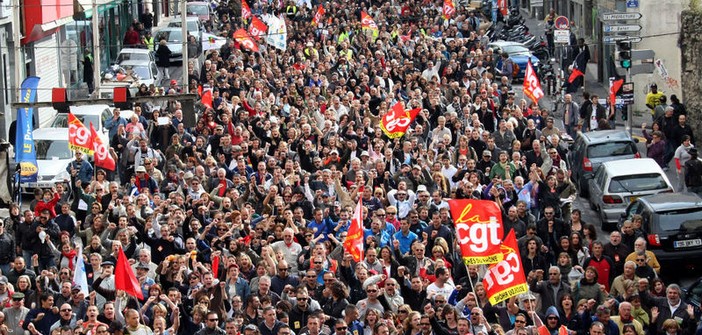The social situation leaves one puzzled over the existence of a social movement in the true sense of the term, that is, a broad, mobilizing movement where all employees come together to walk out and act.
On the other hand, the strategy of the CGT, based on targeted blockades affecting networks (oil, electricity, and marginally the railways) truly raises questions about the nature, intentions, and the will at work today.
By “consuming” far fewer people and activist energy, these actions are remarkably effective and cause substantial damage to the country’s economy.
It is hard not to question here the usefulness of leading an insurrection by stealthily blocking society.
There’s no need to dwell on the three types of worker sabotage: slowing down work, from “take it easy” to work-to-rule, breaking machines, hindering their operation, or leaking company secrets. Extended to the dimensions of the social factory, the principles of sabotage are generalized from production to circulation.
The technical infrastructure of the metropolis is vulnerable: its flows are not just transportation of people and goods; information and energy circulate through networks of wires, fibers, and pipelines, which can be attacked. To meaningfully sabotage the social machine today involves reclaiming and reinventing means to disrupt its networks.
The CGT is adapting the insurrection manual to union legality. Blocking power plants or oil refineries amounts to blocking the circulation of the “social machine” without committing reprehensible acts of vandalism.
The CGT’s insurrection is legal, yet it is no less effective or dangerous.
The apparent blackmail exercised by the CGT on the press, demanding the publication of a piece by Philippe Martinez under the threat of non-publication, speaks volumes about the maneuvers taking place behind the scenes.
It’s hard to believe, but the dictatorship of the proletariat, which the communist party could not impose in 1921, nor in 1944, nor in 1947, began to rear its head in 2016.
It took almost a hundred years for French communists to imitate, in France, their Soviet friends from 1917.
After all, it was comrade Lenin who, in his pamphlet “State and Revolution,” advocated that “active minorities make history,” wasn’t it?


